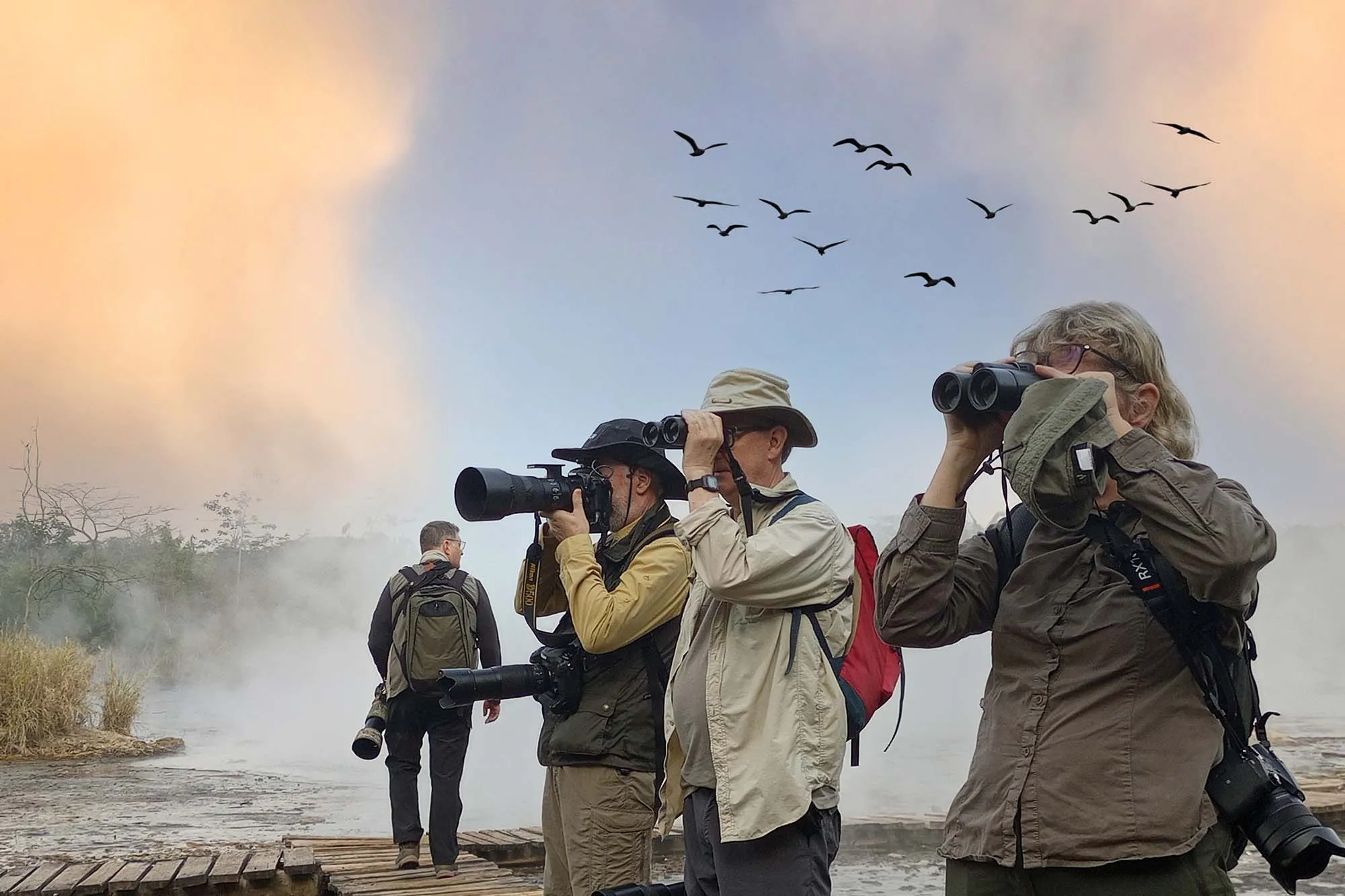Why Birdwatching Is the Underrated Star of Kruger
Kruger National Park is world-renowned for its Big Five, but there’s another Big Five that often goes unnoticed—the feathered kind. With over 500 recorded bird species, Kruger is one of the best birding destinations in Africa. Whether you’re a casual nature lover or a beginner birder, there’s a whole new safari experience waiting above your head and in the trees.
This guide is for anyone who’s curious about starting birdwatching in Kruger—no experience required.
Why Birding? The Joy Is in the Details
Birdwatching slows you down. Unlike the rush of chasing large mammals, birding invites you to pause, listen, and truly observe your surroundings. It adds a layer of mindfulness to your safari experience, and often, the most dramatic behaviours—like mating dances, nest-building, and mid-air hunts—happen in the treetops.
Bonus? Birds don’t care about time of day or vehicle noise. While lions nap, birds are busy being fascinating.
What You’ll Need to Get Started
You don’t need fancy gear to enjoy birding, but here are a few essentials:
Binoculars (8×40 or 10×42 are ideal for bushveld viewing)
A field guide like Sasol or Roberts Bird Guide
Notebook or app for recording sightings (eBird or BirdLasser are popular)
Patience and quiet observation
Beginner-Friendly Birds You’re Likely to Spot
Even if you’re brand new to birding, Kruger is generous to novices. Here are some of the easiest birds to start identifying:
Lilac-breasted Roller – South Africa’s unofficial supermodel with rainbow-coloured plumage.
Helmeted Guineafowl – Often seen in groups, these ground birds are loud and unmistakable.
Yellow-billed Hornbill – Famously known as Zazu from The Lion King, common around camps.
Glossy Starling – Iridescent blue-green feathers and loud calls make them hard to miss.
Hadeda Ibis – The alarm clock of the bush, often heard before seen.
Top Birding Spots in Kruger National Park
For beginners or experienced twitchers, these areas are especially productive:
Pafuri Region (Far North): Excellent for rare species and migratory birds, including the Pel’s Fishing Owl.
Letaba River Banks: Rich in waders, kingfishers, herons, and eagles—plus the scenic setting is unbeatable.
Skukuza Area: Great mix of woodland and river species, with access to trails and hides.
Berg-en-Dal: Look out for white-browed robin-chats, bushshrikes, and the elusive African finfoot.
Each region offers a slightly different bird list, so bring your guide and start ticking boxes.
How Tindlovu Letaba Complements the Birding Experience
After a morning spent with binoculars in hand, Tindlovu Letaba Restaurant is the perfect place to relax, recharge, and reflect. With a clear view of the Letaba River, the restaurant doubles as a bird hide—you might spot African fish eagles soaring overhead or kingfishers darting over the water while you enjoy breakfast or a sundowner.
Birders often gather here to exchange sightings and share tips, so it’s not just a meal—it’s part of your birding journey.
Open Your Ears, Open Your Eyes
You don’t have to be an expert to enjoy birdwatching. All it takes is curiosity, a bit of patience, and a willingness to look beyond the usual safari checklist. Start your journey as a birder in Kruger, and you’ll never look at the bush the same way again.
And when your binoculars are down for the day, Tindlovu Letaba will be waiting—for a warm meal, a cold drink, and maybe a last-minute sighting from your table.

